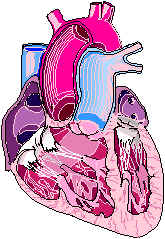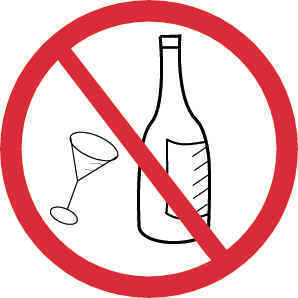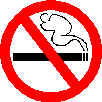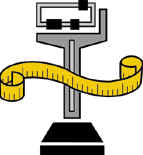
INfertility Workshop is getting a new face and a new place. Please visit us at InfertilityWorkshop.com/BLOG where it is all happening.
The ChangingParadigm
Heart Disease
At one time, nothing could be done about heart disease. As someone clutched their heart and gasped, we could do nothing but look on in pain. As we learnedmore about the heart, we developed drugs and learned how to cut open the body andpartially repair the heart. Today, the death rate for all heart-related diseases is 45percent of what it was in 1963. Many claim that drugs and surgery are the reasons forthis.
clutched their heart and gasped, we could do nothing but look on in pain. As we learnedmore about the heart, we developed drugs and learned how to cut open the body andpartially repair the heart. Today, the death rate for all heart-related diseases is 45percent of what it was in 1963. Many claim that drugs and surgery are the reasons forthis.
But, if this is so, why is "progress" slow-ing down? According to the HarvardHealth Letter (January 1998), there appears to be a slight rise in the incidences ofstroke and kidney disease, and a leveling of the death rate from heart disease among U.S.adults. In other words, perhaps the well-established paradigm--drugs and surgery-is notthe best answer. Perhaps it is time to review our past and see what we can learn. Perhapsit is time to change the paradigm.
History
The history of the heart and its diseases, like all medical history, is a history ofideas: an initial idea, reinforcement of the idea, challenges to the idea, rebukes to thechallenges, and, perhaps, a new idea.
One of the first ideas was put forth by Erasi-stratus of Alexandria, who dissectedanimals and humans (probably Egyptian mummies) 2,300 years ago. He discovered the veins,arteries, and nerves, and postulated that the heart is nothing more than their junctionand that the arteries contain not blood, but air, spirit, or soul (called pneuma). Thisentered the body through the nose, throat, and lungs-in other words, through breathing. Hebelieved the veins do contain blood, and his rational for why blood comes from openarteries is that the blood from veins rushes in as the pneuma floats out.
Parts of this idea were reconfirmed, but many more were challenged and disproved. Thegreat physician of the Roman Empire, Galen, confirmed that veins contain blood, but didaway with the idea of pneuma. He saw that the heart is more than a "circulationjunction" and that blood flows throughout the body, but believed it ebbs and flowswith the heartbeat. Galen was such a great influence upon the medical world that his ideasbecame "medicine". They were codified, made rigid, and acknowledged as the"limit" to medical information.
The Renaissance saw the first revolt against the dogmatic rules that Galen’s ideashad become. The Swiss physician Paracelsus rejected much of Galen’s thought and spokeforcefully against the tendency to accept Galen’s ideas as truth:
"Who does not know that doctors make terrible mistakes, greatly to the harm oftheir patients? Who does not know that this is because they cling too anxiously to theteachings of Hippocrates, Galen …"
For daring to challenge the status quo, he was condemned to a nomadic existence,travelling from town to town.
Andreas Vesalius, born in 1514, continued the challenge to the medical status quo. Hecompiled the complete anatomy of the human body and, in doing so, discovered and exposedmore than 200 errors by Galen. In undermining much of this traditional medical authority,he became controversial at best, and a pariah at worst. He was attacked by many of thepro-Galen forces and retired from academic pursuits embittered and disillusioned.
William Harvey, known as the grandfather of cardiology, drove a stake into the heart ofthe old school of cardiology. He understood that the heart and blood are elements within aclosed system, described correctly how blood flows through the heart, and saw that theheart is the engine that pumps blood. He saw that the heart, lungs, and blood vessels areinterdependent and that what we call heart disease may actually originate somewhere otherthan the heart, especially in the arterial systems.
A common thread that runs throughout this brief history (and, as we shall see,continues today) is that ideas become a rigid status quo (often through no fault of theideas’ originators) and that when they are challenged, the challenger is repudiated,discredited, and often driven out. It is reported that even Harvey, after publishing hisideas, suffered an immediate decline in number of patients because of his "strangetheories."
"Strange theories" …
The notion that new ideas are "strange theories" continues in modern times.In the ’60s and ’70s, Nathan Pritkin was persecuted as a quack and incompetentrebel when he concluded that most heart disease is reversible through a combination ofdiet, exercise, and stress management. The medical profession was relentless in itscriticism, accusing him of giving patients false hope and defrauding them by selling themhis program of lifestyle changes to prevent heart disease.
The 1960s saw another alternative opinion shot down by the medical community. Kilmer S.McCully, M.D., then a professor of pathology at Harvard University Medical School, wentagainst the "killer cholesterol" tide when his studies pointed to an amino acid,homocysteine, as a major cause of heart disease.
McCully had come across research that noted that some mentally retarded children weredying of heart disease before reaching puberty, and the reason was due to high bloodlevels of homocysteine. In 1969, after studying this issue, McCully proposed that manyAmericans suffer from cardiovascular disease due to high homocysteine levels, notcholesterol. More radically, he proposed that all one has to do is take B-complex vitaminsto solve this
problem.
For the next few years, McCully struggled against the cholesterol tide and, in 1978,had to leave Harvard. In his book, The Homocysteine Revolution, he notes that hewas told he had "failed to prove his theory."
… Become mainstream
Pritkin and McCully, like Vesalius and Harvey before them, were proven correct. In thelate '80s, Surgeon General C. Everett Koop took thebold step of reversing decades of medical thought when he declared that 75 percent of thedeaths in America are caused by lifestyle decisions on diet, smoking, and consumption ofalcohol. Today, the National Heart Association publishes a list of dietary recommendationsthat echo Pritkin’s earlier conclusions.
McCully was also vindicated. Articles on homo-cysteine began reappearing and, in 1995,studies in the Journal of the American Medical Association reported thathomocysteine is a major risk factor in CVD. Today, homocysteine is considered anindependent risk factor-it is not influenced by other factors, such as smoking,cholesterol, and physical activity. It is also acknowledged that ade-quate amounts ofvitamins B12 and B6 and folic acid can reduce high homocysteine levels and lower the riskof CVD.
Today, there is more and more emphasis on lifestyle as the key to cardiovascularhealth. Virtually all heart organizations acknowledge that diet and exercise are keys inpreventing heart disease and recommend a diet that is low in total fat, saturated fat, andcholesterol and rich in fruits, vegetables, and fiber.
The paradigm changes
The paradigm underlying these new ideas is that we are responsible for our health. Ifbad lifestyle decisions are responsible for 75 percent of the deaths in America; if mostheart disease is reversible through a combination of diet, exercise, and stressmanagement; if nutrition combats high homocysteine and cholesterol levels, it means thatwe have it in our power to control our health destiny. We do not have to wait until thecrisis and then rush to the doctor or hospital; we can take steps to lower our risk of,and prevent, CVD.
Cardiovascular diseases (CVD)--which encompass events such as heart attack, stroke,angina pectoris, atherosclerosis and arteriosclerosis, and high blood pressure--are theNo. 1 killer in North America. In the United States, somebody dies from heart diseaseevery 33 seconds, and from a heart attack every minute. In Canada, in 1992, CVD accountedfor 38 percent off all deaths.
McCully’s theory
One drawback to the"cholesterol as king" theory of cardiovascular disease (CVD) is that many peoplewith no risk factors suffer from heart problems.
Indeed, an article in the June 26, 1996,issue of the Journal of the American Medical Association notes that the traditional CVDrisk factors (age, genetics, gender, smoking, blood pressure, cholesterol, sedentarylifestyle, diabetes, weight, stress) only explain about 50 percent of all CVD. The aminoacid homocysteine may be the reason.
Homocysteine is formed when the bodybreaks down protein, especially the protein found in meat. Meat protein contains theessential amino acid methionine, and when methionine is digested, it produceshomocysteine. According to McCully’s theory, if homocysteine levels increase, theresult is the buildup of plaque, which, of course, may lead to atherosclerosis, heartattacks, strokes, and death.
Homocysteine builds up if we eat too muchmeat or do not get sufficient amounts of vitamins B6 and B12 and folic acid. These threevitamins are integral in the process of recycling and excreting homocysteine. If we do nothave sufficient amounts of these vitamins, homocysteine levels rise.
Reducing the risk

Practicing AIM's Healthy Cell Concept is the first stepracticing AIM's Healthy Cell Concept is the first step. This conceptstates that five elements--cell food, cell exercise, cell environment, cell protection,and a healthy mental attitude--are all it takes to regain and maintain your health. Youwill find that living the Healthy Cell Concept encompasses the following ways to reduceyour risk.
Paying attention to all risk factorsmay help in combating the "unchangeable" risk factors of age, sex, and heredity.For example, one of the reasons men are more at risk for CVD than women may be because, onaverage and historically, they have smoked more and dealt more with job-related stress.The trend is now changing. Incidences of CVD in women are rising, and more women than menare now dying from CVD: In 1995, about 455,000 males and 505,000 females died from CVD.This may be because women are smoking more and are being subjected to more stress afterentering the job market.
 Stopping smoking limits yourrisk of cancer, emphysema, heart attack, and stroke (not to mention you won’t smelllike an ashtray).
Stopping smoking limits yourrisk of cancer, emphysema, heart attack, and stroke (not to mention you won’t smelllike an ashtray).
Lowering your weight can raiseyour "good" cholesterol level and lower your "bad" cholesterol level.It also helps prevent diabetes and strengthens the heart.
Exercising has the samebenefits as losing weight and, hey, helps you lose weight!
Changing your diet is one of the biggest things you can do. Avoid foods highin cholesterol, saturated fat, trans-fatty acids, and all fat-doing so will reducecholesterol levels, reduce risk of cancers, and help you lose weight. Eat more fruits,vegetables, and fiber. This again helps maintain healthy cholesterol levels, andsubstances found in fruits and vegetables known as phytochemicals work to prevent cancers.Fiber lowers cholesterol and is linked to lower incidences of some cancers and heartdisease. It can also help you lose weight. Decreasing your sodium intake and increasingyour potassium intake can help you maintain a healthy blood pressure.
Using supplements (and foods) high inantioxidants may help prevent CVD. Folic acid and B vitamins combat a high homocysteinelevel. Garlic and ginkgo both aid circulation in general, and garlic has been shown toreduce cholesterol levels and blood pressure. Coenzyme Q10 helps in the manufacturing ofenergy, improves quality of life for those who have suffered heart problems, and may helplower high blood pressure. Fish oil reduces triglyceride (a type of fat) levels and mayhelp reduce the incidence of coronary heart disease. Tocotrienols reduce cholesterollevels and may help prevent breast cancer. Vitamin E may reduce risk for CVD.
Practice stress reduction exercises.Doing so can result in lower blood pressure, less incidence of CVD, and a stronger immunesystem.
 BLOG
- ARTICLES
BLOG
- ARTICLES